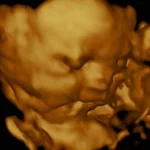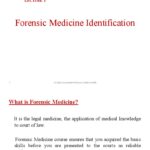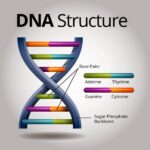The realm of forensic science often conjures images of meticulous crime scene investigations, advanced laboratory analyses, and, inevitably, interactions with deceased individuals. The question of whether forensic scientists must confront the deceased is not a simple yes or no. The answer resides in the nuanced tapestry of specialties within this multidisciplinary field. This article delves into the diverse roles within forensic science, illuminating the extent to which each necessitates interaction with dead bodies. Prepare for a shift in perspective as we dissect the often-misunderstood realities of this crucial profession.
The Spectrum of Forensic Specialties: A Primer
Forensic science is not a monolithic entity. It encompasses a broad range of specializations, each demanding distinct skill sets and dictating the nature of engagement with evidence, including human remains. To understand the scope of exposure to dead bodies, one must first appreciate the breadth of these specializations.
1. Forensic Pathology: The Interface with Mortality
Forensic pathology is perhaps the most directly associated with the deceased. These medical doctors, specially trained, perform autopsies to determine the cause and manner of death. They meticulously examine the body, both externally and internally, documenting injuries, collecting samples, and piecing together the final moments of a life. Interaction with dead bodies is, therefore, the very cornerstone of their profession. It is an unavoidable, crucial aspect of their duties.
2. Forensic Anthropology: Deciphering Skeletal Narratives
Forensic anthropologists are experts in the analysis of skeletal remains. They apply anthropological principles to identify individuals, determine the time since death, and reconstruct events surrounding death. Often, they work with severely decomposed or skeletonized remains, sometimes recovered from clandestine graves or disaster sites. The extent of interaction is highly variable. It depends significantly on the condition and completeness of the remains. Nevertheless, a significant proportion of their work directly involves the deceased.
3. Forensic Odontology: Identifying Through Dental Records
Forensic odontologists specialize in the identification of individuals through their dental records. They analyze dental characteristics, compare them with antemortem records, and can even provide insights into age and dietary habits. While they may not always directly examine an intact body, they often work with skeletal remains involving the jaw and teeth, or with dental impressions taken postmortem. Their interaction, though specific to the oral cavity, is an integral part of the identification process involving deceased individuals.
4. Forensic Toxicology: Unveiling the Chemistry of Death
Forensic toxicologists analyze bodily fluids and tissues to detect the presence of drugs, alcohol, poisons, or other substances that may have contributed to death. While their work is laboratory-based, the samples they analyze are collected from deceased individuals during autopsies or postmortem examinations. While they do not directly engage with the visual or physical aspects of the deceased, their work is intrinsically linked to the postmortem examination process.
5. Forensic Entomology: Insects as Silent Witnesses
Forensic entomologists study insects found on or near a body to estimate the postmortem interval (time since death). Their analysis of insect life cycles and species present can provide crucial information when traditional methods are unreliable. While they primarily focus on insect evidence, their presence at a crime scene involving a deceased individual is often necessary to collect samples and observe the environmental context.
6. Forensic DNA Analysis: The Blueprint of Identification
Forensic DNA analysts extract and analyze DNA from biological samples to identify individuals, link suspects to crime scenes, or establish familial relationships. While they work primarily in a laboratory setting, the DNA samples themselves may originate from deceased individuals. Blood, tissue, or bone samples collected during autopsies or postmortem examinations are often the source of the DNA they analyze. They do not directly work with the body itself, but their work relies on samples derived from it.
7. Crime Scene Investigation: A Broader Perspective
Crime scene investigators are responsible for documenting and collecting evidence at crime scenes, which may or may not involve a deceased individual. If a death has occurred, their duties include photographing the scene, documenting the position of the body, and collecting any potential evidence found on or around the deceased. The level of interaction varies depending on the circumstances, but a significant number of crime scene investigations involve direct contact with the deceased.
The Indirect Engagement: Beyond the Visible
Even forensic scientists who do not routinely interact directly with dead bodies are often indirectly involved. They may analyze evidence collected from a deceased individual, review autopsy reports, or consult with other forensic specialists who have firsthand experience with the remains. The specter of death permeates the field, even for those whose primary focus lies in the laboratory or at a computer workstation.
The Emotional Toll: Acknowledging the Human Element
Regardless of the level of direct interaction, working in forensic science can take an emotional toll. Dealing with death, violence, and the aftermath of tragedy requires a certain degree of emotional resilience. Forensic professionals often develop coping mechanisms to manage the stress and trauma associated with their work. Support systems, psychological counseling, and a strong sense of professional detachment are often essential for maintaining well-being in this demanding field.
Conclusion: A Matter of Specialization
So, do forensic scientists have to view dead bodies? The answer, as we have seen, is complex. While some specialties, such as forensic pathology and anthropology, necessitate frequent and direct interaction with the deceased, others involve a more indirect or laboratory-based approach. The degree of exposure depends entirely on the specific role and area of expertise. Understanding the nuances of these diverse specialties provides a more accurate and comprehensive view of the realities of forensic science.










Leave a Comment